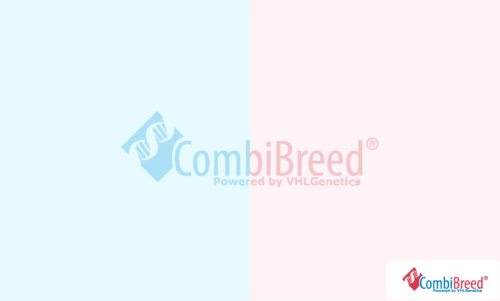Dwarfism ACAN D1, D2, D3*, D4 and D5
Miniature horses with chondrodysplastic dwarfism (ACAN dwarfism) are significantly shorter than expected for their age. They typically exhibit disproportionately short limbs and necks, bowed forelegs, a compressed face with bulging eyes, a pronounced underbite, a cleft palate, a protruding tongue, and abdominal hernias. Foals affected by chondrodysplasia may be spontaneously aborted during pregnancy or may need to be euthanized shortly after birth due to a severely diminished quality of life.
Inheritance
Dwarfism in (miniature) horses is an autosomal recessive condition, where horses that possess two of the four previously known ACAN variants (D1, D2, D3*, and/or D4) always exhibit dwarfism. This means that both a miniature horse that is homozygous (affected) as well as a miniature horse that is carrier of two different ACAN mutations will display the ACAN dwarfism.
In 2023, eight horses with a dwarfism phenotype were found to have only one allele for D2, D3*, or D4. This suggests that there are additional ACAN alleles that cause dwarfism. From this research, the D5 variant (g.95258999 C>T) emerged alongside the already known dwarfism variants D1-D4 and the Brazil haplotype. This variant can be DNA tested in addition to the previously known ACAN variants.
More information about D5 is available in the publication: MOLECULAR GENETIC STUDIES OF HORSES, ESPECIALLY WITH REFERENCE TO AGGR” by John Edmund Eberth (uky.edu)
*D3 is improved
Relevant tests
- P306
- P332
- P380
